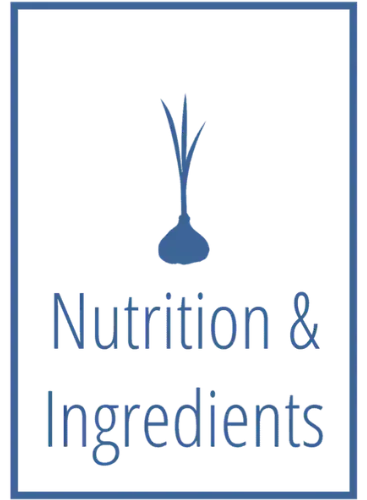Panera Bread Caesar Salad (no chicken)

This salad is made with romaine lettuce, grated Parmesan cheese, and a special crouton made in-house from black pepper focaccia. It’s topped with a Caesar dressing.
One salad has 410 calories, 30 grams fat, 24 grams carbohydrates, and 12 grams protein.
Read this guide for an in-depth overview of the calories, nutrition facts, ingredients, and allergens in the Caesar Salad offered at Panera Bread.
Caesar Salad Nutritional Information
Nutritional information, including calories, is based on a single serving measured as one salad.
Serving Size 1 Salad
Calories
410% Daily Value
saturated fat
40%HIGH
sodium
38%HIGH
added sugars
17%MED
%DV based on 2,000 calorie daily diet
Any reference to percentage daily value (% DV) illustrates a measure of how much a nutrient contributes to a daily diet of 2,000 calories.
Calories in Panera Bread Caesar Salad
A Panera Bread Caesar Salad has 410 calories. Most of the calories are derived from fats.
Here is a summary of the amount of fat in one salad from dietary fat, carbs, and protein.
The highest proportion of total calories is derived from dietary fat. Carbohydrates contribute about 23% of the total calories and the remaining 11% comes from protein.
The summary of calories by nutrient is a rounded estimate based on the nutrition facts provided by Panera Bread. Calories may vary by location or as a result of how the salad is prepared.
Total Fat
One serving contains 30 grams total fat, including 8 grams of saturated fat.
The FDA states that a nutrient with a 20% or greater daily value should be considered high. Based on that guidance, the amount of fat in Panera’s Caesar salad is high.
Total fat has a 38% DV and saturated fat has a 40% DV.
SUMMARY OF DIETARY FAT PER SERVING
Sodium
Sodium content in the Caesar salad is fairly high for a single dish. One serving contains 870 milligrams of sodium, which is a 35% daily value (based on a 2,000 calorie diet).
That is considered high.
Nutrition Summary
Serving Size 1 Salad
CALORIES
410TOTAL FAT
30g(38%DV)
CARBOHYDRATES
24g(9%DV)
PROTEIN
12g| Saturated Fat | 8g (40%DV) |
| Trans Fat | 0g |
| Cholesterol | 50mg (17%DV) |
| Sodium | 870mg (38%DV) |
| Dietary Fiber | 4g (14%DV) |
| Total Sugars | 5g |
%DV (Percent Daily Values) are based on a 2,000 calorie diet. Calorie needs vary and your daily value may be higher or lower. Provided for informational purposes only. Consult with your physician for dietary or healthcare advice.

Ingredients and Allergens in Caesar Salad
Panera Bread Caesar Salad Ingredients
The primary ingredient in this salad is a Lettuce Blend. In addition, the salad includes Caesar dressing, cheese, and is topped with croutons. Here are the ingredients for each of those items.
Caesar Dressing
Ingredients:Soybean Oil, Water, Worcestershire Sauce, Egg Yolks, Red Wine Vinegar, Garlic Puree (garlic and water), Garlic Juice, Egg Yolk Solids, Salt, Lemon Juice Concentrate, Distilled Vinegar, Sugar, Corn Syrup, Anchovy, Black Pepper, Xanthan Gum, Mustard Seed, Garlic Powder, Rosemary Extract, Green Tea Extract, Citric Acid, Nisin and Natamycin (to preserve freshness), and Celery Seed.
Shaved Parmesan
Ingredients:Pasteurized Part-Skim Milk, Cheese Cultures, Sea Salt, Microbial Enzymes, and Natamycin (to protect flavor).
Sea Salt and Black Pepper Croutons
Ingredients:Enriched Flour, Yeast, Sugar, Salt, Sunflower Oil, Microbial Enzymes, Canola and/or Sunflower Oil (with rosemary extract and ascorbic acid), and Seasoning (salt and black pepper).
What is Thiamine Mononitrate?
During the production of certain foods such as breads and other baked goods, certain minerals and natural vitamins are stripped away to improve texture or shelf life.
For example, the bran and the germ are extracted from the wheat. In an effort to improve the nutritional value, food producers add back vitamins and minerals.
Thiamine Mononitrate is one of the supplements typically added back to processed flour. It’s a nitrate salt form of water-soluble vitamin B1.
Enriched flour will also typically contain Riboflavin (B2), Niacin (B3), and Folic Acid (B9).
Allergens
The salad and dressing is made with ingredients that include egg, milk, fish, and wheat.
Nutrition facts, prices, and ingredients are based on available information as of the date of publication. Restaurants and food manufacturers may change their recipes without notice. Check directly with the food provider for the most up-to-date information. NutritionandIngredients.com does not provide health or wellness advice or dietary recommendations. All reports and reviews published on this site are for informational purposes only. Unless otherwise stated, %DV is based on a 2,000 calorie diet. Always consult your physician for any healthcare or dietary advice.
Nutrition facts, allergens, and ingredients source: Panera Bread
